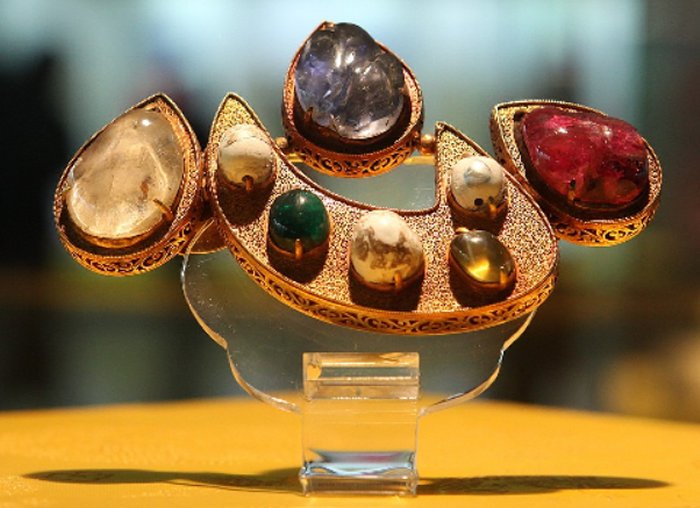Amazing Thirteen Ming Tombs: Gigantic Stone Animals And Human Figures Were Symbols Of Royal Power
A. Sutherland - AncientPages.com - The Ming Tombs ("Ming Thirteen Mausoleums") is a collection of imperial tombs of the Ming Dynasty scattered over forty square kilometers in Changping District northwest of Beijing.
They were built by the emperors of the Ming dynasty of China, all members of one family.
Of the sixteen emperors of China's Ming Dynasty (AD 1368-1644), only three were not buried with the rest (two were buried elsewhere, while the other still needs to be accounted for).
The remaining thirteen were built according to 'feng shui' (closely related to Taoism), a Chinese philosophical system of harmonizing everyone with the surrounding environment.
The first Ming emperor's tomb was built in 1409, and the last one in 1644, and it took more than two hundred years to build this necropolis.
 Top image: Watercolor overview of the Ming Tombs. Credits: United States Library of Congress's Geography & Map Division
Top image: Watercolor overview of the Ming Tombs. Credits: United States Library of Congress's Geography & Map Division
It seems that the tombs were arranged randomly, but each emperor's grave has a location meticulously chosen with precision and strategy; all this was done within 120 kilometers of the fascinating landscape.
All halls in the Ming tombs were built with nanmu, a special kind of wood (the so-called imperial timber) used frequently in China. In the Ming Dynasty, special groups were sent to dangerous, uninhabited regions of south China to collect nanmu.
Another unique building material was bricks; each with the imprinted word "longevity" weighed about 25 kilograms. One million bricks were required each year, each of good quality, solid and smooth, and emitting a clear tone when struck. The names of brick manufacturers and officials put in charge were printed on every brick for later check.
The entire impressive graveyard is located at the foot of the Tianshou Mountains, of which earlier, simple name was Huangtu (yellow earth).
Yongle died in 1424 and was the first emperor buried in this graveyard. Three tombs have been excavated and restored: Chang Ling, the largest; Ding Ling, whose underground palace is open to the public; and Shao Ling. Yongle was important in Chinese history; he moved the capital from Nanjing to Beijing after its reconstruction. Yongle's tomb gave inspiration to the building of other graves. As was the Chinese tradition, the Emperor and Empress were buried under a large mound in underground vaults. Imperial tombs were tightly sealed because emperors feared grave robbers.
One of the more impressive sights at the Ming Tombs is the Sacred Way (or Road), about seven kilometers long and flanked on both sides by carvings of human and animal figures. Twelve large stone human figures and twenty-four animals were carved from a single granite block in 1435.
This piece of jewelry was one of the most beautiful antiques excavated from the Dingling, Welcome one of the w:Ming Dynasty Tombs. It was made during the w:Ming Dynasty (1368–1644) in China, by using gold, ruby, pearl and other gemstones, and is about the size of an adult human's palm. It is of the shape of a Chinese character '?' (read Xin), which literally means heart. This photo was taken at the Dingling Museum. Image uploader: Mlogic - CC BY-SA 3.0
Interestingly, placing stone animals and human figures in front of imperial tombs can be traced back at least to the Qin Dynasty (221-206 BC.), some two thousand years ago, as each dynasty has followed this custom. However, both numbers of figures and animals varied depending on the dynasty.
In the Qing Dynasty, such stone animals as qilin, pixie (exotic animal with horns), elephants, and horses were placed in front of the tombs. In the Tang Dynasty (618-907 CE), lions, horses, oxen, blackbirds, and stone figures of civil officials and warriors were favored. In the Northern Song Dynasty (960–1279), stone animals –such as elephants, horses, sheep, tigers, lions, blackbirds, and stone figures of civil and military officials- were lined in front of imperial tombs.
Presently, the Ming Tombs are designated as one of the components of the World Heritage Site, the Imperial Tombs of the Ming and Qing Dynasties.
Written by – A. Sutherland - AncientPages.com Senior Staff Writer
Updated on Oct 20, 2023
Copyright © AncientPages.com All rights reserved. This material may not be published, broadcast, rewritten or redistributed in whole or part without the express written permission of AncientPages.com
Expand for referencesMore From Ancient Pages
-
 Pilot Mountain Is Home To A Mysterious Underground Civilization – Cherokee Legend Tells
Featured Stories | Apr 30, 2021
Pilot Mountain Is Home To A Mysterious Underground Civilization – Cherokee Legend Tells
Featured Stories | Apr 30, 2021 -
 New Egyptian Dinosaur Helps To Reconstruct Evolution Of Dinosaurs In Africa
Archaeology | Jan 30, 2018
New Egyptian Dinosaur Helps To Reconstruct Evolution Of Dinosaurs In Africa
Archaeology | Jan 30, 2018 -
 Dramatic Life Story Of Queen Marie Antoinette Executed By Guillotine During The French Revolution
Featured Stories | Oct 18, 2021
Dramatic Life Story Of Queen Marie Antoinette Executed By Guillotine During The French Revolution
Featured Stories | Oct 18, 2021 -
 When Did Humans First Start To Speak?
Featured Stories | Dec 12, 2022
When Did Humans First Start To Speak?
Featured Stories | Dec 12, 2022 -
 Sacred Healing Earth Of Chimayo And The Mysterious Black Christ Crucifix
Featured Stories | May 24, 2019
Sacred Healing Earth Of Chimayo And The Mysterious Black Christ Crucifix
Featured Stories | May 24, 2019 -
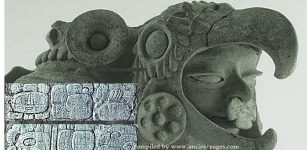 On This Day In History: Powerful Warlord And Emissary Of Spear-Thrower-Owl Arrived At Tikal – On Jan 8, 378 AD
News | Jan 8, 2017
On This Day In History: Powerful Warlord And Emissary Of Spear-Thrower-Owl Arrived At Tikal – On Jan 8, 378 AD
News | Jan 8, 2017 -
 Unknown Prehistoric Henge Site Detected Near Famous Newgrange In Ireland’s East Coast
Archaeology | Jul 13, 2018
Unknown Prehistoric Henge Site Detected Near Famous Newgrange In Ireland’s East Coast
Archaeology | Jul 13, 2018 -
 The Ancient ‘Flying Machines’ Of Icarus and Daedalus
Featured Stories | Aug 16, 2014
The Ancient ‘Flying Machines’ Of Icarus and Daedalus
Featured Stories | Aug 16, 2014 -
 The Oseberg Tapestry And Other Artifacts Show Intense Colors Were A Viking Symbol Of Status And Wealth
Featured Stories | Sep 27, 2021
The Oseberg Tapestry And Other Artifacts Show Intense Colors Were A Viking Symbol Of Status And Wealth
Featured Stories | Sep 27, 2021 -
 On This Day In History: Mysterious Death Of White Queen Anne Neville – On Mar 16, 1485
News | Mar 16, 2017
On This Day In History: Mysterious Death Of White Queen Anne Neville – On Mar 16, 1485
News | Mar 16, 2017 -
 Did The 8 Omens Of The Aztecs Foretell The End Of Their Civilization?
Civilizations | Jan 30, 2020
Did The 8 Omens Of The Aztecs Foretell The End Of Their Civilization?
Civilizations | Jan 30, 2020 -
 Is ‘Someone’ Regularly Altering The Course Of History? – Unexplained Events – Part 2
Ancient Mysteries | Dec 3, 2020
Is ‘Someone’ Regularly Altering The Course Of History? – Unexplained Events – Part 2
Ancient Mysteries | Dec 3, 2020 -
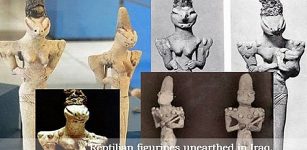 The Mystery Of The Serpent Seed
Biblical Mysteries | Jul 19, 2019
The Mystery Of The Serpent Seed
Biblical Mysteries | Jul 19, 2019 -
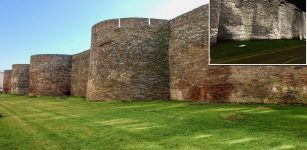 Walls Of Lugo: Finest Example Of Late Roman Fortifications – Stands The Test Of Time
Featured Stories | Sep 22, 2022
Walls Of Lugo: Finest Example Of Late Roman Fortifications – Stands The Test Of Time
Featured Stories | Sep 22, 2022 -
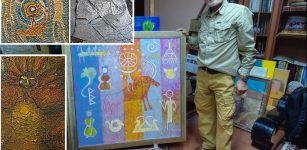 The Indigenous Artists Keeping Ancient Rock Art Traditions Alive For Future Generations
Archaeology | Oct 3, 2024
The Indigenous Artists Keeping Ancient Rock Art Traditions Alive For Future Generations
Archaeology | Oct 3, 2024 -
 Mystery Of The Second Gabriel Stone And The Man Resurrected By Archangel Gabriel
Biblical Mysteries | Sep 10, 2018
Mystery Of The Second Gabriel Stone And The Man Resurrected By Archangel Gabriel
Biblical Mysteries | Sep 10, 2018 -
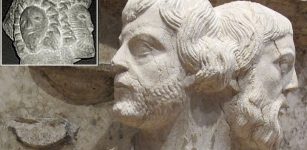 Two-Faced Great Roman God Janus – Symbol Of All Beginnings And Endings
Featured Stories | Apr 9, 2021
Two-Faced Great Roman God Janus – Symbol Of All Beginnings And Endings
Featured Stories | Apr 9, 2021 -
 How Ancient Seascapes Shaped The Genetic Structure Of European Populations
Archaeology | May 20, 2022
How Ancient Seascapes Shaped The Genetic Structure Of European Populations
Archaeology | May 20, 2022 -
 Man Finds A Viking Sword In His Garden – A Viking Grave Could Also Be Nearby – Scientists Say
Archaeology | Sep 2, 2022
Man Finds A Viking Sword In His Garden – A Viking Grave Could Also Be Nearby – Scientists Say
Archaeology | Sep 2, 2022 -
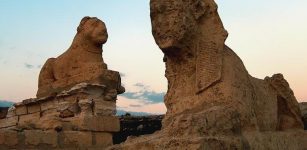 Thriving Faiyum Oasis Declined And Was Abandoned Due To Climate Change
Archaeology | Jan 26, 2021
Thriving Faiyum Oasis Declined And Was Abandoned Due To Climate Change
Archaeology | Jan 26, 2021



